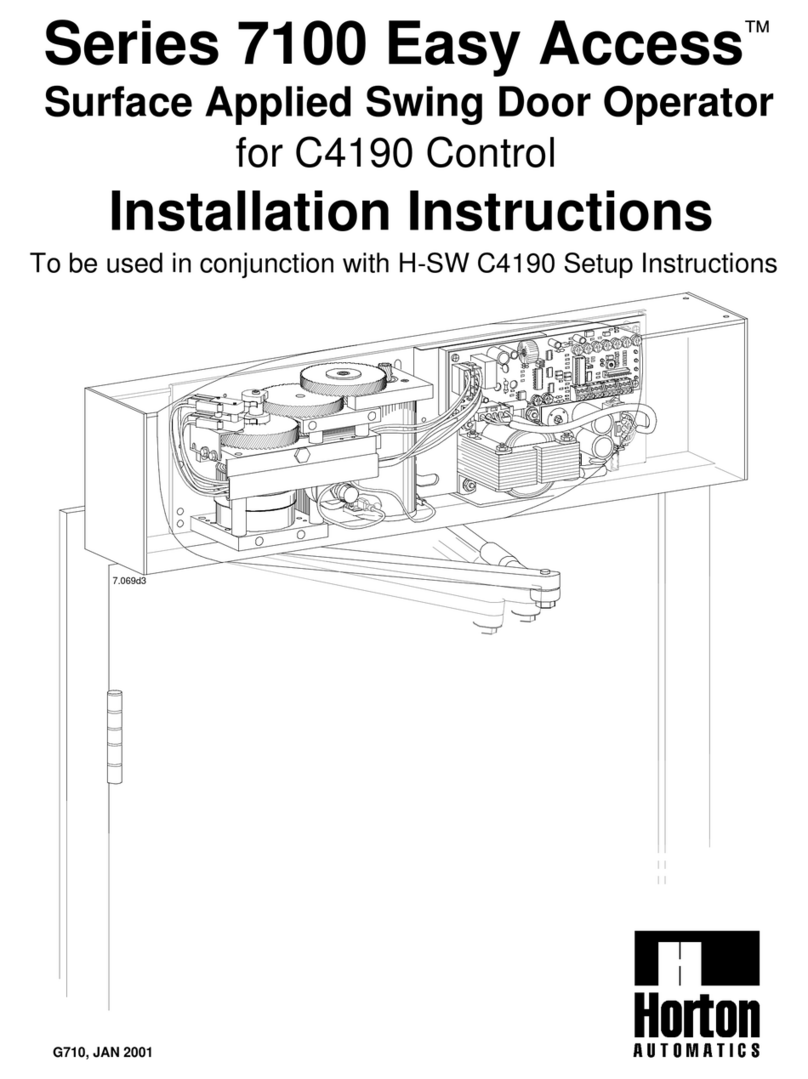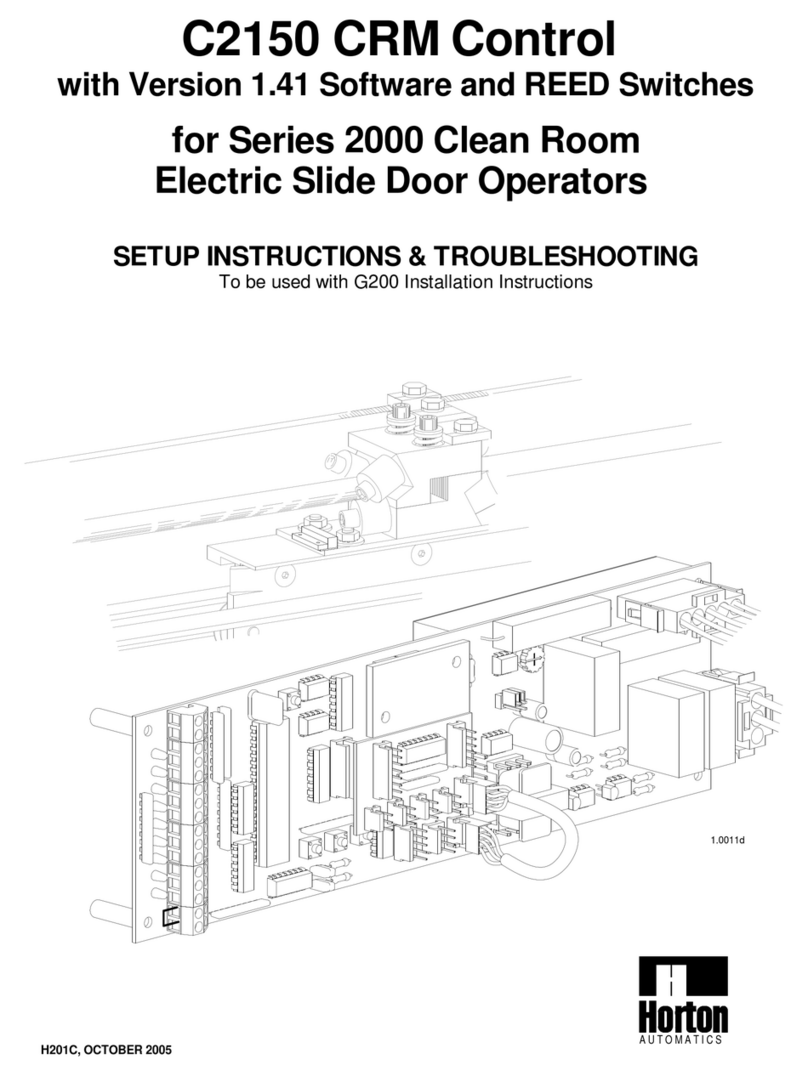
4.ADJUSTABLE PRESET PARAMETERS
*Caution: very light doors may require a lower speed setting
The chart below shows all the adjustable parameters for version 2 software.
Follow the procedure outlined in step 9 to make any necessary changes.
**In versions 2.06 & prior, d1 and d2 adjust from 1-199 seconds.
**Beginning with version 2.07, these parameters may be set to 1-8, 10, 12,14, 16, 20, 25,
30 or 60 seconds.
-A double dash (--) is a reserved parameter that is not implemented.
CODE
-The display will show the current value or setting of
the parameter.
-When the SET button is released, the display will show
the parameter that was just changed. Another parameter
may be changed, or the toggle circuit turned on to check the
changes just made. In versions 2.12 and up the SET button
may be double clicked to exit the menu (toggle must be on).
-With the display reading 2d or da press and HOLD the
SET button until dS (data save) is displayed. All of the
changes are now stored in the control's memory.
This step must be performed or the control will revert to
the default settings after a power failure.
-Set the reversing sensitivity as required using R10. Do not
leave this adjustment at minimum. Horton recommends setting
the sensitivity so the door will reverse at 28 ft.lb. or less.
-When all adjustments have been made and checked, be
sure the toggle circuit is on.
10th Step -Saving new settings
-While holding the SET button,
press the UP or DOWN button to modify the setting.
2.190d1
R
+100
UP
UP
+100
R
+100
DOWN
SET
DOWN
SET
-Refer to the chart in section 4 for a list of codes for
adjustable parameters.
-Scroll through the parameter list using the UP and
DOWN buttons until the parameter to be changed is
found.
-When the parameter to be changed is found, press
and hold the SET button.
-The display will switch to the menu of adjustable parameters
-In versions 2.10 and up, the right decimal point will be blinking
-Turn the toggle switch OFF
Or for versions 2.12 and up, leave the toggle ON and
double click the SET button.
A chart of preset values is shown to the right.
If any speeds or other settings need to be changed, follow this procedure:
9th Step - Changing parameter settings
3. ADJUSTING PARAMETERS
UP
UP
R
+100
SET
R
DOWN
DOWN SET
UP
R
+100
SET
DOWN
OP (power fail OPen)
H202.4
OP/CLPower Fail
oF
3 (factory set - most senistive - 0 off)
on (version 2.13 & up only)
on (version 2.07 & up only)
oF (version 2.03 and up only)
oF (version 2.05 and up only)
oF(if lock stays unlocked in day mode)
oF (All open speeds)
on (version 2.07 & up only)
1 (Set during initialization)
oF (Never used)
oF (on)(Version 2.03 & up only)
oF(fail-secure) (on fail-safe)
oF (monitored lock)
oF (on if Horton lock is present)
oF (on)(Version 2.03 & up only)
oF (version 2.03 & up only)
on (version 2.06 and up only)
OBstruction
no Adjustment permitted
Sidelite Protection
TYpe
Jam Sensing
reverse on encoder Pulse
Unmonitored Lock
daytime 1-way Lock
daytime Lock
Close braking
Lock present
brake on recycles
fail-SAfe lock
Power fail Night mode
SLow
Bistable Lock
APex
1-2-3
oF/on
oF/on
oF/on
oF/on
0-3
oF/on
oF/on
oF/on
oF/on
oF/on
oF/on
oF/on
oF/on
oF/on
oF/on
oF/on
75% of stroke
4
4
oF (no)
oF (no)
(as determined by learn cycle)
oF (no)
12*
10
on (yes)
8" (adjustable in inches)
3 (factory set - do not change)
3 (factory set - do not change)
1 (factory set - do not change)
1 sec
FACTORY PRESET VALUE
1 sec
3
3
Partial Open position
Auto Seal
cycle test
total Stroke
open Check Point
Stop OKon first run
delay time 2 (partial open)
Heavy-duty door/motor
PARAMETER
CloseCheck
Open Check
Open Speed
Open cUshion
delay time 1 (full open)
Close cUshion
Close Speed
oF/on
12-199"
8"-ts
50-90% ts
1-60**
oF/on
oF/on
oF/on
0-15
0-15
0-15
ADJUSTS
0-15
1-60**
0-15
0-15





























